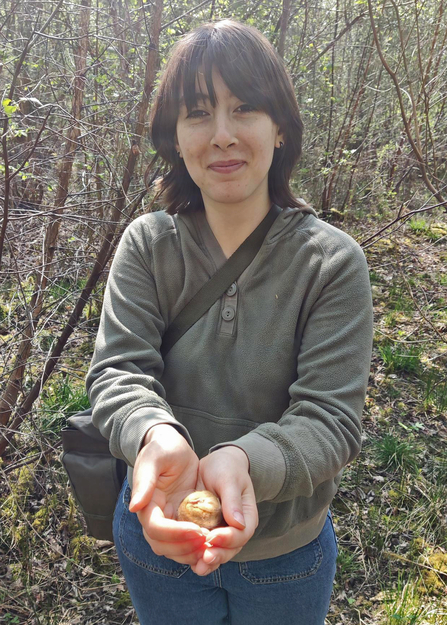It was an unusually early start for me; I’ve never been a morning person. However, today was different. 8am on the nature reserve was sunny but the crisp air reminded me that it was still spring. Dom, the reserve manager, joined me in the car park. Together we watched Andy (dormouse expert and long-time volunteer) shuffle equipment out of his van. Organised piles of tunnels, nest boxes and camera traps were passed over in favour of a few simple shoulder bags. These were doled out to me and Dom. My investigation of the bag revealed an old rag and a large, clear plastic bag, which I questioned hesitantly. However, Dom and Andy assured me that they would be useful for today’s activity.
We were surveying hazel dormice; the first of many surveys to take place through the spring, summer and autumn. The species is iconic, despite being restricted to very few places in the UK. Gauging the health of dormice populations in our reserves is only the first step in a national effort to protect an extremely vulnerable species. I was eager to be part of it and delighted that I could join a licensed dormouse surveyor on a monitoring visit.
Dom held out a map of the reserve, crisscrossed with lines. Each line was a hidden path that, if followed, would reveal the location of the dormice. I have always been respectful of Wildlife Trust reserves by sticking to the sign-posted routes. Straying into the thicket felt strange. The woodland got progressively denser. Pokes and prods from errant twigs became more frequent. Andy explained how dormice are arboreal, excessively so, as they do not travel over open ground. The sheer thickness of hazel and willow suddenly made sense.
It wasn’t long before we found our first nest box tied to a thin trunk, seemingly attached backwards. Design features such as a small, tree-facing hole were purposely incorporated to deter birds from nesting in the boxes, Andy explained. On instruction, I wedged the old rag into the entrance and slid the lid open. An angry little blue tit peered up at me, which made me chuckle. Many tit species thrive on this reserve and nesting places are always in short supply. This blue tit must have been desperate. Me, Dom and Andy spread out, checking multiple nest boxes. If the box wasn’t occupied by a disgruntled bird, it was filled with eggs and nesting material or empty. Despite the lack of dormice, I was greatly enjoying myself. Viewing birds through binoculars can warp your perspective but seeing a marsh tit up close reminded me how small and cute they are.


